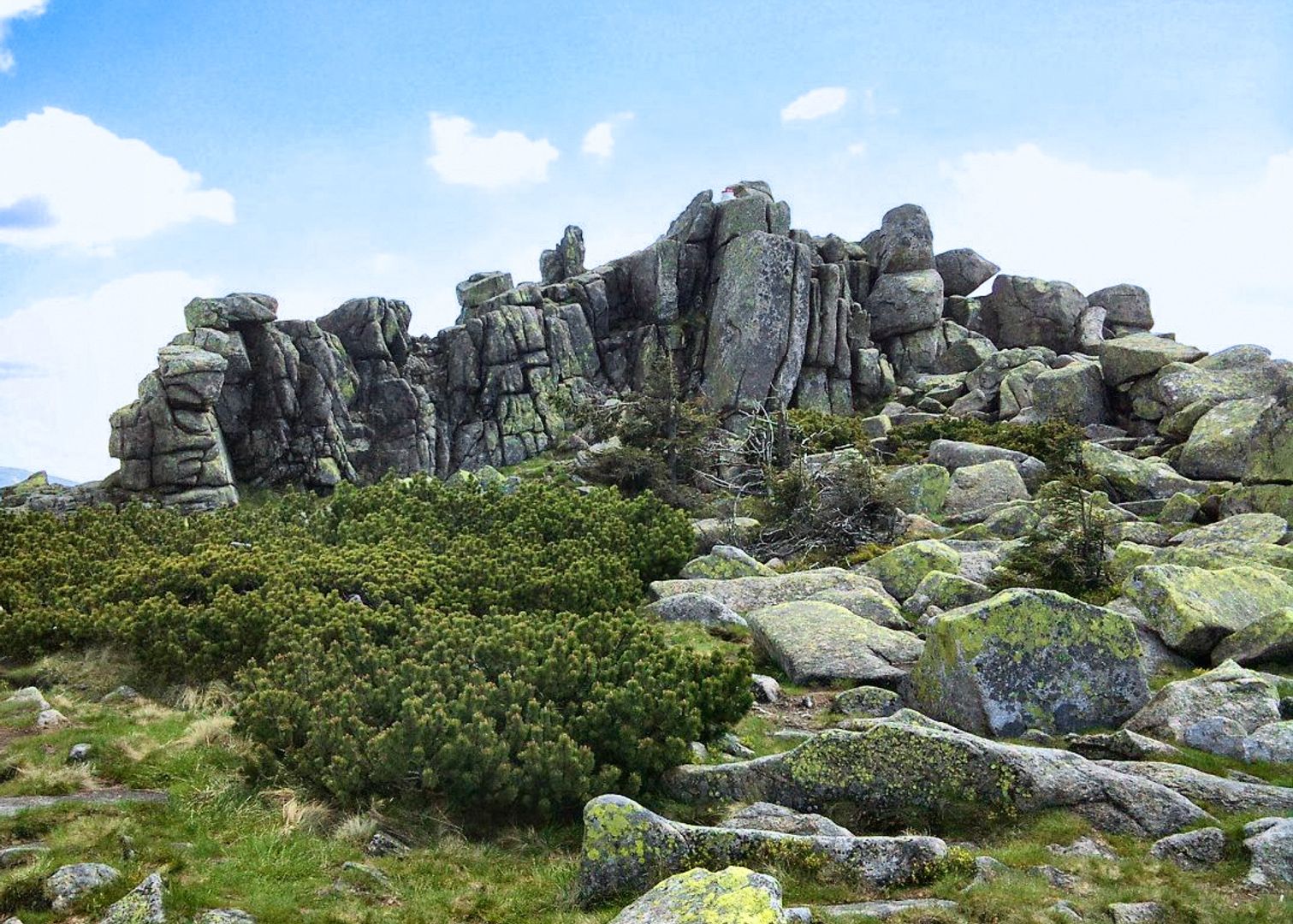Czech Stones
6.72

Overview
Czech Stones (Czeskie Kamienie) is a mountain peak with an elevation of 1,416 meters above sea level, located in the Western Sudetes, within the Karkonosze range, on the Śląski Ridge. It forms part of an extensive summit area together with the neighboring Śląskie Kamienie. At the top, there is a group of distinctive rocks, clustered into boulder-like formations reaching up to 11 meters in height and stretching over approximately 50 meters in length. The site holds historical significance—one of the boulders is engraved with the date January 14, 1929, commemorating the tragic death of Czech journalist Rudolf Kalman, who perished in a snowstorm.
The vegetation on Czech Stones includes dwarf mountain pine at the summit, while the lower slopes are covered with upper montane spruce forests. The massif marks the border between Poland and the Czech Republic, giving it geopolitical importance. Geologically, Czech Stones are composed of Karkonosze granite, and alongside the main rock formations, there are smaller groups of crags and numerous boulders, creating a unique and diverse landscape.
The hiking trail passing through Czech Stones is part of the red-marked Main Sudeten Trail, which connects Szklarska Poręba with Karpacz, making the area accessible to tourists. Moreover, the peak lies within the Karkonosze National Park on both the Polish and Czech sides, which helps protect its unique nature and scenery. Czech Stones not only attract mountain hiking enthusiasts but also hold cultural and historical significance for both Poland and the Czech Republic, serving as a witness to events from decades past.
Location
Country
2025 Wizytor | All Rights Reserved